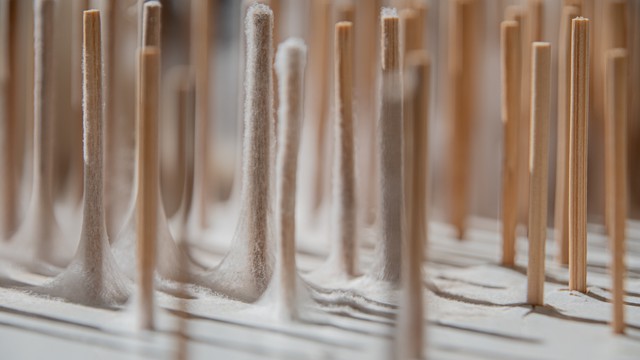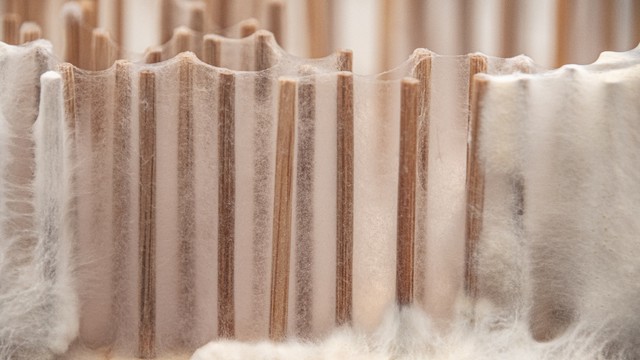losing control 2022, Germany, Weimar
mycelium in post-anthropocentric experiments



How can we design collectively to create meaningful, resilient, and mutualistic relationships with the 'other'? Perhaps we just need to lose control?
The increasing influence of human activity on biological, geological and climatic processes is bringing the world beyond humans into focus. For the purpose of ecologically sound development, a re-approach to the 'other', the non-human, which we have neglected and exploited in our pursuit of human progress, is needed. New methodologies and ways of collaboration are essential to re-engage our relationships with nature and establish a new sensibility. 'losing control' experimentally explores the potential of control loss as a methodology for a multi-inclusive, post-anthropocentric design in which the vitality - the aliveness - of all participants is paramount. To address this, this work focuses specifically on mycelium, the root-like fiber tissue of fungi, that has recently attracted industrial focus in research for ecologically sound products and materials. Thus, mycelium finds application in the development of new building materials, packaging, clothing or meat alternatives, but is dried, and therefore killed, in the production process. With the help of experiments and observations of interaction, this work artistically explores the possibilities of mycelium to grow into living spaces and to create places of emotional as well as sensory encounter that establish transformative relational structures between human and organism, thereby revealing new ways of knowing, stimulating processes of change, and counteracting the reductionism inherent in human agency. Two model studies - deliberately unobtrusive pavilion structures - showcase the organism and provide a stage that allows it to unfold as freely as possible, making the mycelium visible, palpable and tangible in its vitality. In interaction with the constructive features of the adventurous architecture, the organism grows into 'xenospaces', places of encounter and alienation that exhaust the capacity of architecture as a reflector and mediator of needs, desires and problems. In this way, the different and equal interests of all participants of the design are constantly being negotiated.
Poster
Details
Team members : Nik Dommermuth
Supervisor : Jason Reizner, Alexandra Abel
Institution : Bauhaus-University Weimar
Descriptions
Visual Concept : Experimental Pavilion #1 explores the idea of a dissolving architecture and the resulting accesses and views. Two partially enclosed communication bubbles play with the privacy of humans and non-humans. The poles are both a space-creating, fragmenting and structuring object as well as a vertical growth element that reveals the fungus. The organism expands space, constitutes it, and ultimately becomes space itself; something inhabitable. Experimental Pavilion #2 explores the lightness, dynamic and volatility of fabric. The mesh structure of gauze serves as a growth and colonization medium for mycelium and other organisms. As they grow over, they expand and alienate the original intention, manifesting the otherwise ephemeral form of the fabric. A yellow, inorganic catwalk contrasts with the living landscape, underscoring the vulnerability as well as the vitality of all participants.
Credits
Nik Dommermuth
Nik Dommermuth
Nik Dommermuth